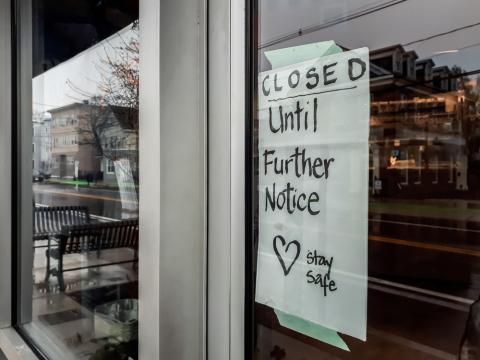Introduction
Data is at the heart of quantitative public health research. We spend our days analyzing the relationship between exposures and outcomes to figure out what makes people healthier. But universally, datasets such as claims data and population health surveys are missing the population-level exposures that we need to understand how to improve population health and health equity.
Population-level exposure data helps us go beyond documenting that disparities exist to identify the causes of inequitable outcomes. When public health researchers have linked population health data such as state Medicaid expansion data with health outcomes, we’ve learned critically important implications of social and health policies.
As it turns out, social policies such as unemployment insurance may do as much or more to shape health as health policies like Medicaid. The role of social policies is clearly illustrated by COVID-19. Most of the story of whether people will be exposed to COVID-19 and their vulnerability to severe illness and death from COVID-19 was written in the course of their lifetimes – the health care they receive for COVID-19 shapes the final chapter, while social policies shaped the rest of the book.
With the COVID-19 US State Policy (CUSP) Database, we aim to broadly facilitate research on state health and social policies. We captured the dates when states changed more than 100 health and social policies during and leading up to the pandemic, from mask orders and business closures, to unemployment insurance and eviction freezes, to interstate medical licensing. The data are provided by state name, abbreviation, and Federal Information Processing System (FIPS) code to make it easy to merge with any form of state identifiers in datasets with information on health and other outcomes.
Now is a critical time to study how policies shape health. Along with increased vulnerability to serious illness and death due to COVID-19, the pandemic has increased vulnerability to financial distress, food insecurity, and housing insecurity. It has caused disruptions to education. Structural inequities have magnified all of these repercussions for people who are Black, Latinx, and Native American. Education and economic circumstances will affect health for decades to come, and policies can exacerbate or ameliorate these forces.
Example Research Questions
CUSP data can be used to answer a variety of research questions. A few policy-relevant examples include:
- Were state minimum wage policies associated with food and housing insecurity during the COVID-19 pandemic overall and by race?
- How did restaurant closures affect the spread of COVID-19 overall and by race and ethnicity?
- How did eviction freezes affect children’s educational outcomes?
Possible Approaches
The CUSP data may be linked with data on COVID-19 cases and deaths, economic precarity, food and housing insecurity, and other health outcomes. See examples of datasets and possible linkages in the Tools and Resources section.
CUSP provides the dates of state policy changes to facilitate difference-in-differences analyses. We carefully define policy variables and code them accordingly and do our best to track every change in a rapidly changing policy context. We encourage researchers to cross-reference other data sources, and we facilitate this process by making our source documentation publicly available. Researchers could compare how an outcome changes before and after a policy change in policy-change states relative to how the outcome changed in the same time period in comparison states without a policy change. Researchers may also use a related method called an event study, evaluating how an outcome changed in each time period leading up to and following policy changes in policy change states relative to comparison states.
Putting Evidence into Practice
Drs. Wei Lyu and George Wehby used the CUSP data on state mask orders in the most read article in Health Affairs in 2020. They merged CUSP data with county-level data on COVID-19 cases tracked by the New York Times. They found that face masks were associated with a reduced COVID-19 growth rate, and their work informed policymakers and the public about the importance of masks for preventing COVID-19.
To date, less research has focused on understanding how social policies are affecting health. We have started work on how unemployment insurance and eviction freezes are shaping health during the pandemic. We hope this blog post will encourage more people to use the data to investigate how these and other social policies shape health!
Tools and Resources
To investigate the relationship between state policies and COVID-19 cases and deaths, we recommend linking with datasets such as the New York Times and Johns Hopkins COVID-19 trackers and COVID-19 Racial Data Tracker data from the Center for Antiracist Research and The Atlantic.
To investigate the relationship between state policies and other health and economic outcomes, we recommend linking to Census Pulse data, which are state representative. CUSP data could also be linked to Bureau of Labor Statistics data available by state. We also recommend Understanding America Study data; while they are not representative of each state, there is individual variation in exposures, such as amount of unemployment insurance received or fear of imminent eviction, due to state policies.
